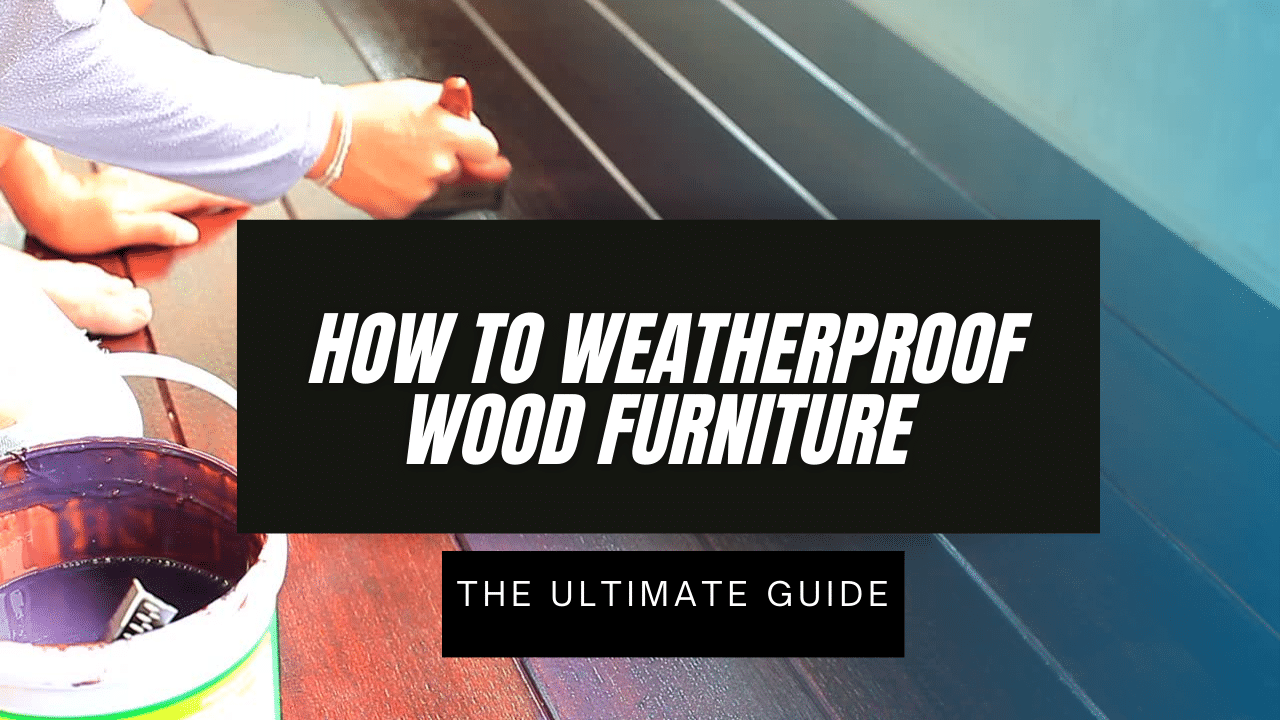Choosing the Right Wood: How To Make A Wooden Chair Weatherproof

The foundation of a weatherproof chair lies in selecting the right wood. Not all wood is created equal when it comes to withstanding the elements. Some woods are naturally resistant to moisture, decay, and insect infestation, making them ideal for outdoor furniture. Others, however, are more susceptible to damage and require extra protection.
Hardwoods vs. Softwoods
Understanding the difference between hardwoods and softwoods is crucial for choosing the right wood for your chair. Hardwoods come from deciduous trees that lose their leaves in the fall, while softwoods come from coniferous trees that bear cones and have needles. Generally, hardwoods are denser and more durable than softwoods, making them a better choice for outdoor furniture.
- Hardwoods: Teak, cedar, and oak are known for their exceptional durability, weather resistance, and natural oils that repel moisture and insects. Teak, with its rich golden color and naturally oily surface, is highly prized for its longevity and resistance to rot. Cedar, known for its distinctive aroma, is also resistant to rot and insect damage, while oak, with its strong grain pattern, offers excellent durability and stability.
- Softwoods: Pine and fir are less expensive and readily available, but they are more susceptible to moisture damage and insect infestation. Pine is often used for budget-friendly furniture, but it requires proper treatment to withstand outdoor conditions. Fir is known for its lightweight and workable nature, but it needs protection from moisture and insects.
Wood Type Comparison, How to make a wooden chair weatherproof
| Wood Type | Durability | Weather Resistance | Maintenance Requirements |
|---|---|---|---|
| Teak | Very High | Excellent | Minimal |
| Cedar | High | Good | Moderate |
| Oak | High | Good | Moderate |
| Pine | Moderate | Fair | High |
| Fir | Moderate | Fair | High |
Finishing Touches for Maximum Weather Resistance

The final stage of weatherproofing your wooden chair involves applying a protective finish. This crucial step acts as a barrier against the elements, preserving the wood’s integrity and extending its lifespan.
Choosing the Right Finish
Selecting the right finish for your outdoor chair depends on factors like desired aesthetic, level of protection, and application ease.
- Oil-Based Stains: These stains penetrate the wood, enhancing its natural grain while offering a degree of protection against moisture and UV rays. Their rich, deep colors can create a warm and inviting look. However, oil-based stains have a strong odor, require longer drying times, and can be challenging to apply evenly.
- Water-Based Paints: Water-based paints offer excellent protection against moisture, UV rays, and weathering. They are also easier to apply, dry quickly, and have minimal odor. However, they tend to conceal the wood’s natural grain and may require more frequent touch-ups compared to oil-based stains.
- Polyurethane Coatings: Polyurethane coatings provide a durable, water-resistant barrier that safeguards the wood from moisture, UV rays, and abrasion. They are available in various finishes, including gloss, semi-gloss, and matte, allowing you to customize the look of your chair. Polyurethane coatings are typically more durable than stains and paints but can be more challenging to apply.
Application Process
Regardless of the chosen finish, proper application is crucial for achieving optimal protection and a beautiful finish.
- Prepare the Surface: Before applying any finish, ensure the wood is clean, dry, and free of dirt, debris, and loose fibers. Sanding the surface with fine-grit sandpaper will create a smooth finish and allow the finish to adhere better.
- Apply the Finish: Use a brush, roller, or spray gun to apply the finish evenly. Apply thin coats, allowing each coat to dry completely before applying the next. Follow the manufacturer’s instructions for drying times.
- Multiple Coats: For maximum protection, apply multiple coats of finish. Two to three coats are typically recommended for most finishes.
Applying a Final Sealant
A final layer of sealant provides an extra layer of protection against UV rays, moisture, and weathering.
- Choose a Sealant: There are various types of sealants available, including polyurethane sealants, acrylic sealants, and wax sealants. Choose a sealant that is compatible with the finish you applied and provides the level of protection you need.
- Prepare the Surface: Before applying the sealant, ensure the surface is clean and dry. If necessary, lightly sand the surface with fine-grit sandpaper to create a smooth finish.
- Apply the Sealant: Use a brush or roller to apply the sealant evenly. Apply thin coats, allowing each coat to dry completely before applying the next. Follow the manufacturer’s instructions for drying times.
How to make a wooden chair weatherproof – Making a wooden chair weatherproof requires a good sealant, and a well-maintained chair can last for years. A great example of a chair built to withstand the elements is the emmerson reclaimed wood swivel chair , which is crafted from durable reclaimed wood.
This chair is designed to withstand the elements, thanks to its natural oils and protective finish. So, whether you’re looking to protect your existing wooden chair or seeking inspiration for a new one, the Emmerson swivel chair is a great place to start.
Protecting your wooden furniture from the elements is crucial for longevity. A good sealant can help, especially for chairs like the Broyhill acacia wood counter height chair , which is often exposed to moisture and sun. While regular maintenance is key, consider using a water-based polyurethane or a marine varnish for a more robust weatherproof finish.
